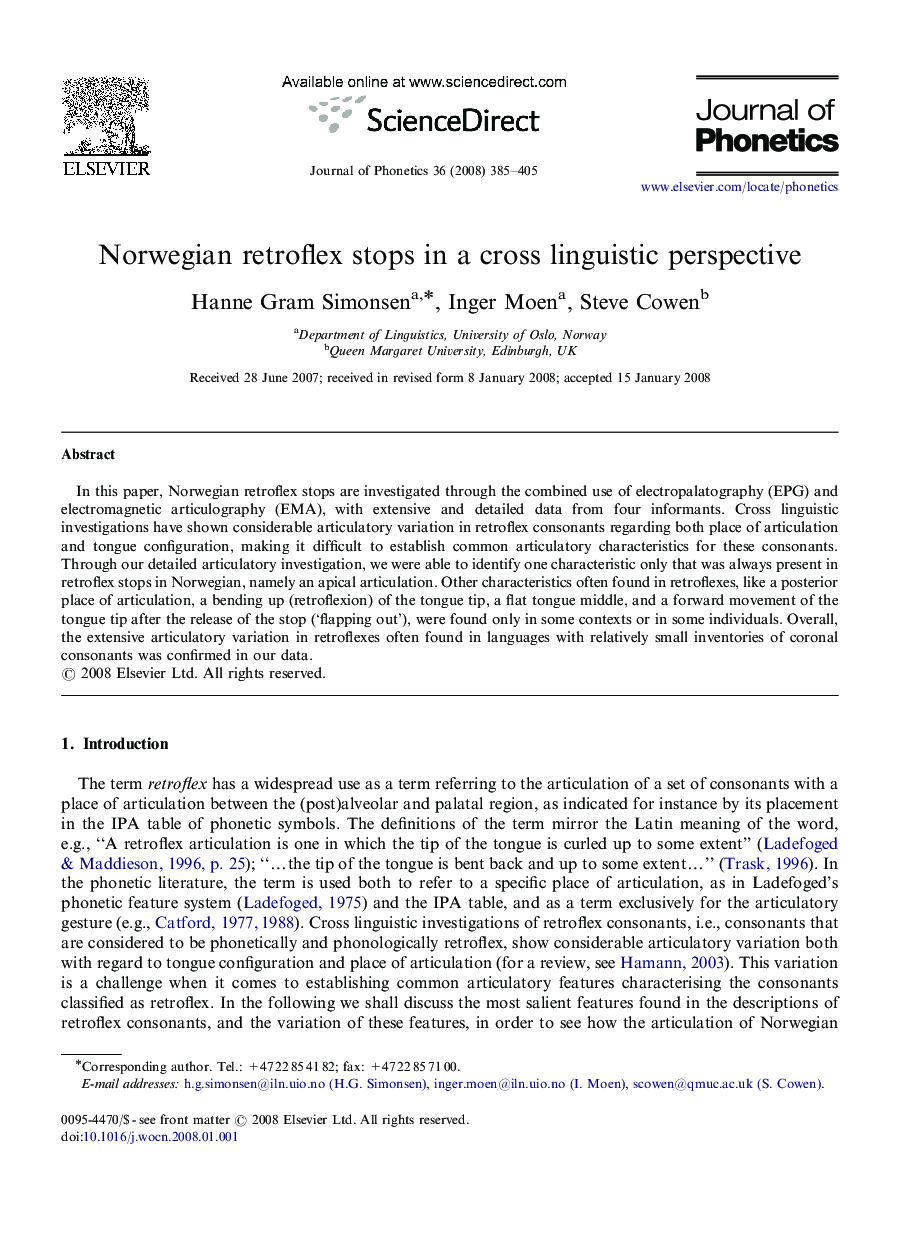| Article ID | Journal | Published Year | Pages | File Type |
|---|---|---|---|---|
| 1101016 | Journal of Phonetics | 2008 | 21 Pages |
In this paper, Norwegian retroflex stops are investigated through the combined use of electropalatography (EPG) and electromagnetic articulography (EMA), with extensive and detailed data from four informants. Cross linguistic investigations have shown considerable articulatory variation in retroflex consonants regarding both place of articulation and tongue configuration, making it difficult to establish common articulatory characteristics for these consonants. Through our detailed articulatory investigation, we were able to identify one characteristic only that was always present in retroflex stops in Norwegian, namely an apical articulation. Other characteristics often found in retroflexes, like a posterior place of articulation, a bending up (retroflexion) of the tongue tip, a flat tongue middle, and a forward movement of the tongue tip after the release of the stop (‘flapping out’), were found only in some contexts or in some individuals. Overall, the extensive articulatory variation in retroflexes often found in languages with relatively small inventories of coronal consonants was confirmed in our data.
